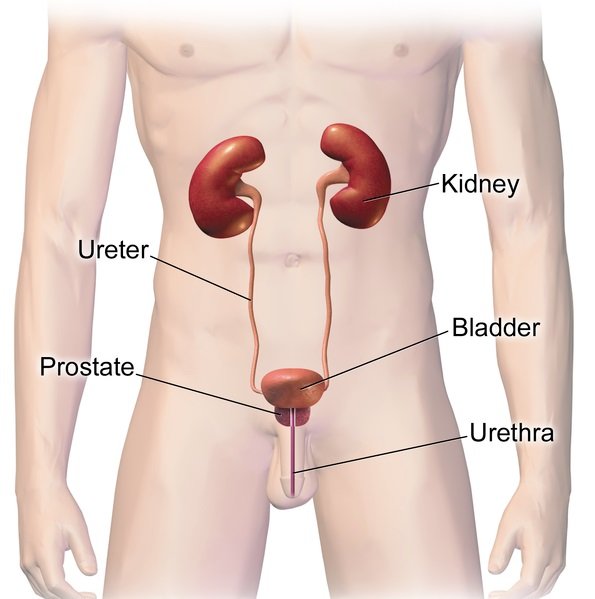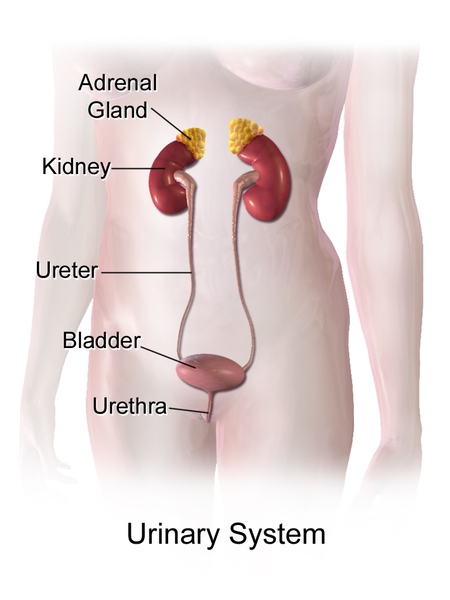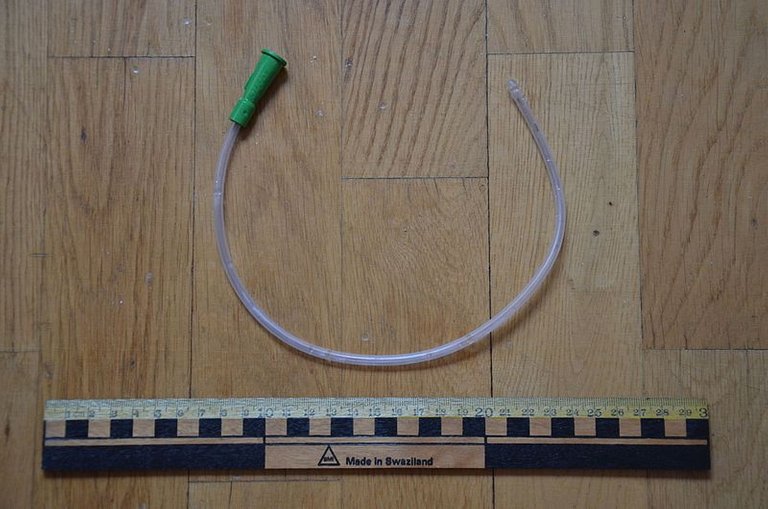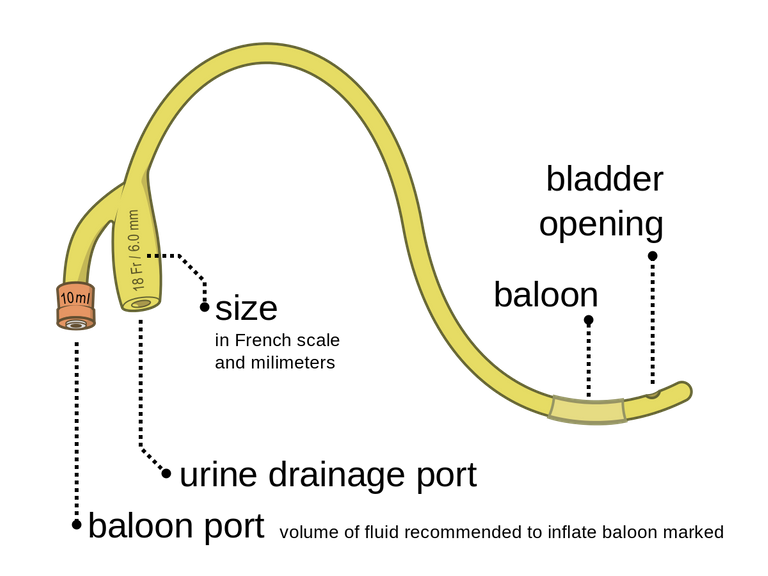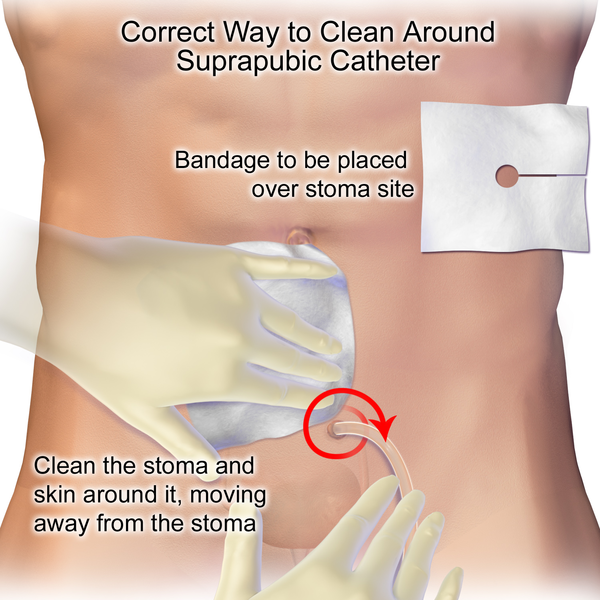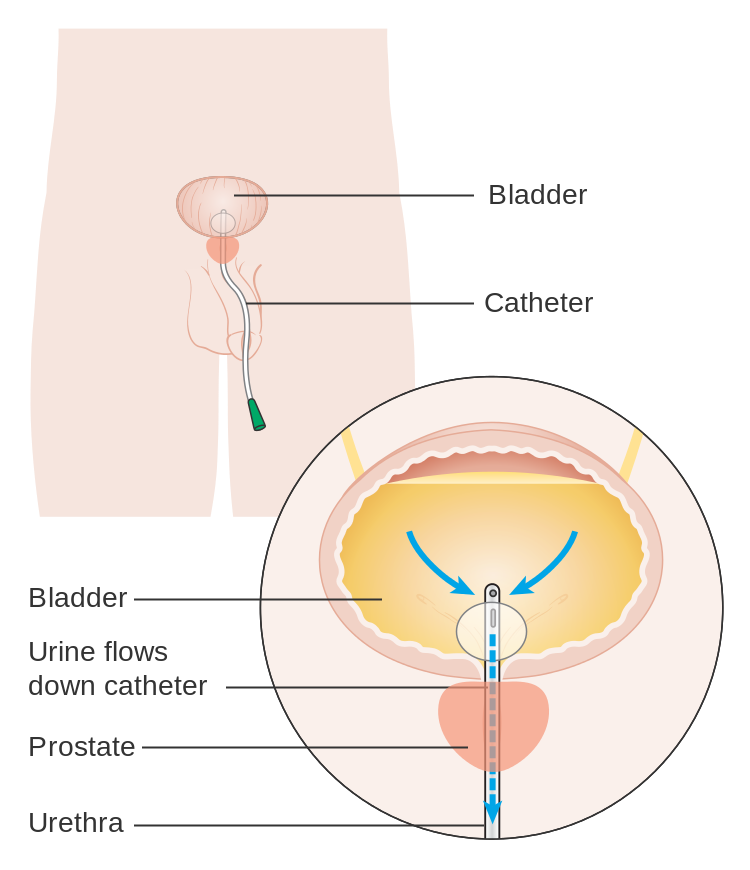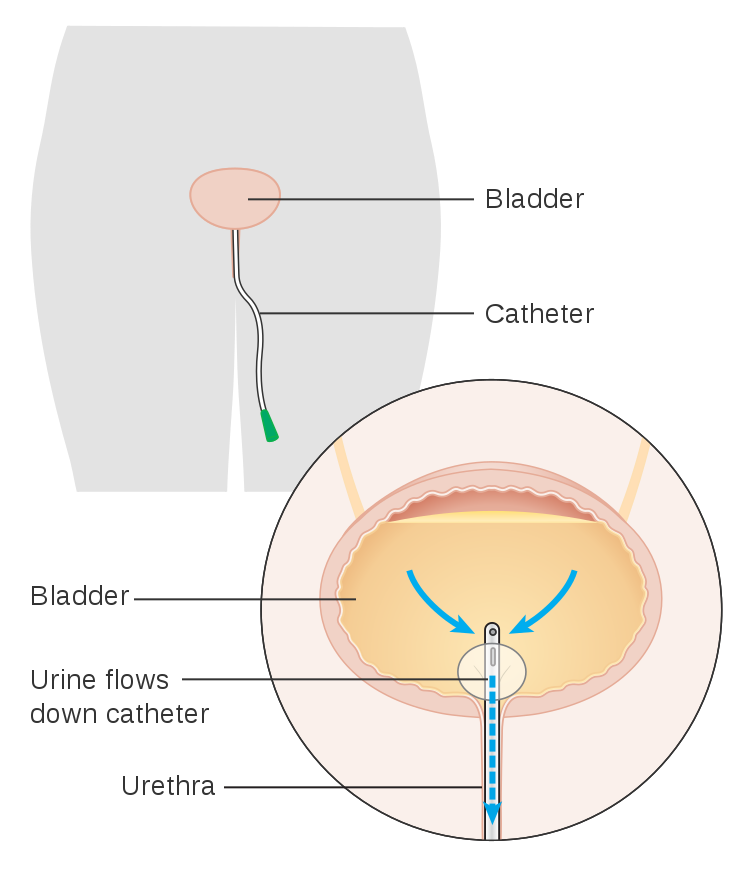Hello everyone I greet you all in this wonderful community. I'm here again today and I bring to us an interesting topic which is from a general aspect of health and I encourage everyone here to pay attention to this article as I will try my possible best to make it simple to understand and I know there are lots of things to learn from this post so relax.
There are different systems in the human body, but today my discussion will be related to urinary system and the process of passing of urine through artificial means in both males and females. Before I continue with the topic of today which is the artificial means of urine elimination, I will like to briefly discuss the structure (anatomy) and function (physiology) of the urinary system in both males and females inorder to make the article easier to comprehend.
THE URINARY SYSTEM
Just as the name goes, this system is responsible for the formation of urine and removal of waste products from the body which are toxic like the creatinine, urea etc are purified from the blood and passed out through urine. So this system is responsible for both the formation and passage of urine. The following structures makes up the urinary system:
• THE KIDNEYS: there are too kidneys in the human body and each has a bean shape, they have the role of urine formation through filtration of the blood to remove wastes that can cause harm to the human body. Urine formation occurs in the kidney that is why patients with renal or kidney failures usually have poor urine output compared to what they take in which means the kidneys are not functioning well leading to accumulation of these harmful substances in the body and because their kidneys can't perform that, the dialysis machine which is known as an artificial kidney does the purification work of the kidneys.
• URETER
just as the kidneys are two in the body, the ureters also are two,continuing from each of the kidneys and are narrow tubes responsible for channeling the urine produced from the kidneys into the bladder. Each ureter has a route of entry into the bladder where urine is stored.
• BLADDER
The bladder is known to be round like balloon in shape and is highly muscularized which makes it stretch to different sizes inorder to accommodate or store high amount of urine sent into it. The bladder has three openings which forms the ** trigon**, two of the openings are situated at the upper part which allows the two ureters to fit in and deliver the urine which they carry from the kidneys, while the last opening located below allows the release of urine from the bladder to the urethra from where the urine passes through till it is voided or urinated via the urinary meatus.
• URETHRA
This structure though sounds like the ureter with similar functions, allows for the passage of urine from the bladder to the urinary meatus. So while the former delivers urine into the bladder, the later moves it out.
• URINARY MEATUS
This is the first opening in the female external genitalia through which the urine passes out from the body. In males, this opening performs both reproductive and urinary functions as it's the only opening in the penis.
Having briefly explained the urinary system and it's structures as well as functions, I will go into the main topic of discussion which is catheterization.
CATHETERIZATION
Catheterization which I also call artificial means of urination (passing of urine) can also be explained to be the process of empting the bladder of urine to prevent infection, for diagnostic purposes,or to ascertain the amount of output an individual is making so as to identify how functional the kidneys are.
This procedure can be carried out for both males and females, and there are some conditions where catheterization is necessary and some of these conditions I will outline below.
INDICATIONS FOR CATHETERIZATION
• Perioperative and post operative patients.
Before any surgical procedure, the patients are usually catheterized because they will be under the influence of the anesthesia and also will require some time after surgery to recover fully.
• Unconscious patients.
This group of patients are unresponsive and so will not be able to say when they have the urge to urinate neither can they help themselves, so inorder to help them carry out this task which they cannot do on their own, a catheter is usually passed into the bladder which is known as a reservoir for urine so as to empty it.
• Urinary retention
This is a condition in which urine accumulates in the bladder or is being retained and this is because the bladder does not empty it's contents completely. Because of the residue of urine in the bladder, it serves as a site for disease causing microorganisms to breed which results to infection. So inorder to prevent this situation catheterization is done in such conditions so as to ensure complete empting of the bladder.
• Collection of urine sample for test.
This procedure is also carried out to get or collect urine samples for different kinds of laboratory investigations inorder to ensure the urine sample is sterile.
• Bladder irrigation.
Bladder irrigation or washing is a procedure which is usually done inorder to remove or prevent blood clot formation which could obstruct the passage of urine both in males or females especially in some surgeries affecting the genitourinary organs or areas. This bladder irrigation can only be done when the individual is catheterized because one part of the catheter will be for introducing the irrigation fluid into the bladder while the other opening for removal of the fluid from the bladder.
• Strict monitoring of output especially for renal failure and heart failure patients. This is to know if the amount of fluid that is being taken in corresponds to the amount that is being removed from the body and it will reveal how functional the kidneys are.
These are some of the conditions where this procedure is highly needed in both males and females.
Now, I will be discussing three different types of catheterization and they include: the indwelling catheterization, the intermittent catheterization and the suprapubic catheterization.
Before I go further in explaining each type of catheterization, let me briefly discuss the different types of catheter which is the major material used in carrying out this procedure. I will like to mention the common ones which are the one way foley catheter,the two way foley catheter and the three way foley catheter.
• THE ONE WAY FOLEY CATHETER
This type just as the name goes, have just a single passage for the urine and therefore is used for intermittent catheterization because it does not have a balloon which can keep it in place.
A one way or single use catheter
• THE TWO WAY FOLEY CATHETER
This type of catheter has two points just as the name goes, one point for letting the urine out either to a urine bag connected to it or just to the external, while the other point is for injection of the fluid which is used in inflating the balloon as soon as the catheter is situated in the bladder to prevent it from sliding out. This type of catheter is usually used for indwelling catheterization.
• THE THREE WAY FOLEY CATHETER
This type of catheter usually has three points just as the name goes One point allows the urine to drain either into the drainage bag or to the external, the other is to allow for the fluid used for the irrigation of the bladder to flow in as it is usually connected to the fluid and last point is used for inflating the balloon with fluid usually sterile wate or injection water or as soon as the catheter is in the bladder to prevent I from sliding out. This type of catheter is mostly used for indwelling catheterization as well as bladder irrigation. Also these catheters comes in various sizes for different ages or sizes of individuals like the 14, 16, 18 etc
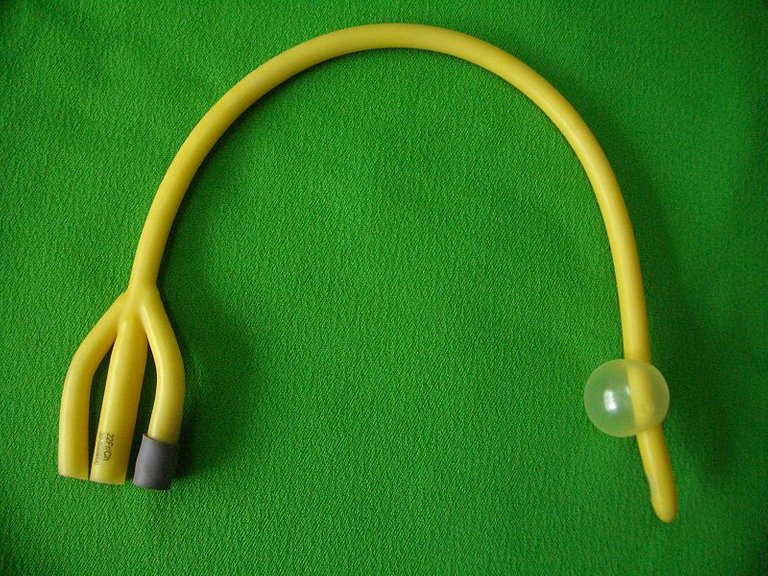
A three way catheter with inflated balloon
Having mentioned this three types of catheter, I will go ahead with the different types of catheterization.
TYPES OF CATHETERIZATION
• INTERMITTENT CATHETERIZATION: This is the type of catheterization in which the bladder is drained intermittently by passing the catheter and removing it after emptying the urine in it. Unlike the other types, the catheter is not left insitu in this type of catheterization and this type is usually used during urine sample collection to prevent contamination of any kind as well as during the process of labour to empty the bladder so as to allow the easy descent of the baby's head there by speeding up the labour process.
• THE INDWELLING CATHETERIZATION:This type of catheterization is adopted for patients who have the need of staying on it over a period of time and some of these patients are unconscious, Perioperative patients, patients that require strict monitoring of intake and output etc. Usually this type of catheterization is carried out using a two way foley catheter just like I earlier stated.
• THE SUPRAPUBIC CATHETERIZATION: This is the type of catheterization in which the catheter instead of being passed through the urethra into the bladder, is passed into the bladder surgically through making an opening on the suprapubic region of the abdomen (stoma) for easy drainage of urine. This type of catheterization is usually done for patients who have adhesions or any form of urethral strictures or obstruction which can hinder catheterization through the urethra.
Having known the types of catheter and catheterization, the next discussion will be on how the procedure is being carried out in both males and females.
PROCEDURE FOR MALE CATHETERIZATION
This procedure is usually a sterile one, and is done using aseptic techniques the steps includes:
• Assembling of all the materials necessary for the procedure eg drainage bag, catheter, syringe, sterile swab wet with savlon to clean the external orfice and a dry one to dry it afterwards,kidney dish, etc.
• Obtain consent from the patient and position him appropriately for the procedure, Wash hands, dry and put on gloves especially sterile gloves since it's a sterile procedure.
• Clean the orifice on the penis with the wet swab or cotton wool to disinfect it.
• Gently open the catheter from the pack to avoid contamination of the part entering inside, lubricate the catheter is a lubricant eg KY JELLY, to prevent any form of friction and pain allowing the catheter to freely pass through the urethra into the bladder.
• Once it gets to the bladder, urine most times is seen to trickle or flow out. As soon as it's confirmed to be in the bladder, it's removed after draining the urine if it's an intermittent catheterization but if not, the balloon is inflated with the required amount of the sterile water for that particular type of catheter to prevent it from coming outside.
• After securing it inside, the urine bag or drainage bag is usually fixed to it to collect the urine while the patient is made comfortable.
It is important to note that great care and precautions should be taken, before inflating the balloon by making sure the catheter is in the bladder and not the urethra to prevent some complications like penile bleeding from occuring which could be due to the rupture of any blood vessel in that area
PROCEDURE FOR FEMALE CATHETERIZATION
The female urethra is known to be shorter than that of the males and so will take up less length of the catheter compared to that of the males. The steps involved in the insertion is similar to that of the male and are as follows:
• Assembling of all the materials necessary for the procedure eg uribag, catheter, syringe, sterile wet swab with savlon to clean the external orfice and a dry one to dry it afterwards,kidney dish, etc.
• Obtain consent from the patient and position her appropriately in a lithotomy position for the procedure, Wash hands, dry and put on gloves especially sterile gloves since it's a sterile procedure.
• Clean the Urinary orifice or meatus with the wet savlon swab and dry ,after which the the catheter is opened careful to avoid contamination. The catheter is then lubricated with eg KY JELLY, to prevent any form of friction and pain allowing the catheter to freely pass through the urethra into the bladder.
• Once it gets to the bladder, urine most times is seen to trickle or flow out as soon as it's confirmed to be in the bladder it's removed after draining the urine if it's an intermittent catheterization but if not, the balloon is inflated with the required amount of the sterile water for that particular type of
catheter.
• The urine bag is then attached to it to collect the urine, then the patient is made comfortable.
I would like to emphasize that this procedure can be carried out by either a doctor or nurse and also it is left for the person to choose the appropriate size of catheter to use for each individual to prevent discomfort or complications from occuring. Also the patient can also be taught how to self catheterize especially in cas
Some of the common complications that could be experienced in catheterization are:
Urethral bleeding or from surrounding, sepsis which could be due to poor hygiene either while passing the catheter or while or due to prolonged use of it Etc.
So adequate care and precautions should be taken during this procedure to prevent any form of complications from occuring.
I will draw the curtain here and I hope this post was of great benefit, to you all, Thank you all for your time, I await your inputs and supports. Anticipate my next post.
REFERENCE
Procedure for insertion of catheter into the bladder
